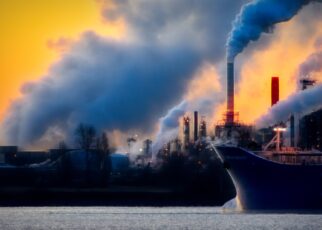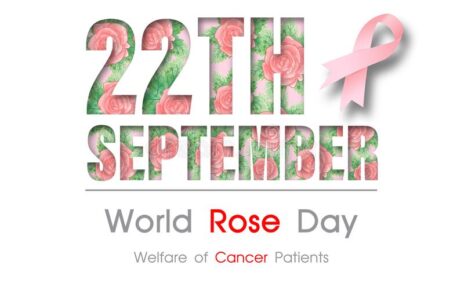More than 40,000 industrial chemicals are currently commercially available worldwide, and hundreds of new chemicals are being discovered and made available each year. Only a handful of these chemicals are being studied for their adverse effects. Extremely harmful chemicals are released into the environment ie., into the water, into the soil, and into the food chain.
Through food and drinking water, organisms accumulate in the body hazardous chemicals such as Polychlorinated biphenyls (PCBs), phthalates, lead minerals such as lead, pesticides as well as long-standing pharmaceutical chemicals are causing irreversible damage to human health, other organisms, and the plant environment.
Poor management of chemical and other wastes can lead to costly conditions. The World Health Organization (WHO) estimates in 2016 that chemical waste caused an estimated 1.6 million people to become infected.
There has been some vigilance among the public after it was discovered that these chemicals and other wastes can cause a wide range of chronic diseases such as cancers, reproductive disorders, mental disorders, and other dangerous health problems.
Read More: By 2050, half of the world’s population would not have access to water
Children, in particular, are suffering from a myriad of diseases. These days babies are exposed to the chemical at a very early stage that is during their time in the womb itself and this might cause premature birth, disabilities, and other disabilities.
The major cause of Chemical Pollution is the industries, many of the chemicals they emit, and related wastes. All of these can be classified as ‘point-source’ pollutants. These include oil refineries, paper industries, coal-fired power industries, textile industries, food refining industries, mines, and pharmaceutical industries waste.
Many of these organic and inorganic wastes as well as heavy metals are released and contaminate the surrounding waters.
Heavy metals that are released through industrial waste and remain in the environment for a long time are the most dangerous.
From where they are released, they enter ponds, ditches, streams, and rivers through rainwater, where they accumulate in the bodies of aquatic organisms, such as shrimp and fish. Through these water animals, the chemicals enter the body of humans, animals, and birds upon their consumption. All these hazardous chemicals that enter the body of living beings will cause damage day by day and would have an adverse effect on health in the long run.
The second major cause of chemical pollution in water is chemical fertilizers, pesticides, and herbicides used in agriculture. Thus chemical wastes emitted from agricultural lands are referred to as ‘non-point source’ factors. It is a well-known fact that the use of chemicals has increased tremendously in recent times due to the industrialization of the agricultural sector.

The main reason for this is the rapidly growing population around the world. All countries have launched a ‘green revolution’ aimed at developing the agricultural sector to meet their food needs.
As part of this, mechanization for productivity enhancement, increasing the use of chemical fertilizers along with organic fertilizers to achieve higher yields, prevention of pests causing crop damage, reduction of losses during storage of agricultural products, and promotion of the use of pesticides for weed control were encouraged.
In this way, the production was increased by the use of pesticides. Although the use of these pesticides initially seemed beneficial, many first-generation pesticides were banned after they were exposed to the harmful effects of the overdose, their environmental impact, and their impact on human health.
Although pesticides were originally discovered during World War II they were especially used to control mosquitoes, flies, and other insects that spread infectious diseases at the time.
However, at that time these pesticides were produced in large quantities and indiscriminately polluted the environment by chilling the forests and swamps in high doses. However, their effects have led to the extinction of many aquatic organisms. Numerous researches have found that pesticide residues in the environment are at dangerous levels.
The American scientist Rachel Carson, who studied the research papers comprehensively, authored a book, The Silent Spring, in 1962. The book explicitly warns that indiscriminate overdose of pesticides could endanger the human race. As a result, the United Nations recognized and banned long-term exposure to pesticides in the 1970s.
Although developed countries have banned those pesticides, they have exported thousands of tons of pesticides already produced in those countries to developing, well-backward countries for cash. However, even though the imported countries bought them at low prices, they supplied them to the farmers in those illiterate countries without knowing their ill effects. Thus some countries have polluted the environment by indiscriminately using banned pesticides.
Despite the production of pesticides that cause less environmental damage over time, their use increases as residues remain in the water and affect the metabolism of other organisms and human health.
At present, our country is the second-largest producer of chemical pesticides in the world and the 5th largest exporter of pesticides. In the next place stands China. There are 275 types of pesticides registered in India. Of these, 115 pesticides were identified as the most dangerous.
According to 2011–12 figures, India produces 68,490 tonnes of pesticides. However, pesticide use fell from 72,130 tonnes in 1991–92 to 56,090 tonnes in 2012–13. nevertheless, it must be said that the threat also increased as the production of the most powerful pesticides increased despite the decrease in usage.
Scientists have found high levels of pesticide residues in various water sources in India. Pesticide residues that are currently accumulated in the environment can enter organisms and cause many health problems. All kinds of chemicals, regardless of their source of contamination, reach the water sources in the nearby landfills through various channels.
The residues of these pesticides pass through the plaques in the food chain, reaching 10 times more than the carnivores that eat them, eventually reaching the point of extinction. Already many birds, vultures, hawks, and wildlife have reached the point of extinction.

In addition to these pesticide residues, heavy metals in the earth’s crust are also released into the water through mining. They also increase the effectiveness of pesticides that have been in the environment for a long time. In this way, water contaminated with pesticide residues and heavy metals can seep into many inland plants, vegetables, and grass-fed livestock.
Can not be cleaned or removed
Once the water is contaminated by toxic chemicals and heavy metals, it is impossible to purify the water and remove it completely.
Moreover, the removal process is also a very costly task. Depending on the nature, evolution, and water quality of the polluting chemicals, it is important to determine whether the water is fit for use. The quality of freshwater determines the lifestyle of the organisms in it.
Heavy metals containing chemical residues that enter human bodies through food products can cause strange diseases. The recent Eluru outbreak in Andrapradesh is a good example.
Also Read: Blizzard takes over the United States of America
Discover more from Thenewsdoor
Subscribe to get the latest posts sent to your email.






One thought on “Chemical pollution will lead to the extinction”